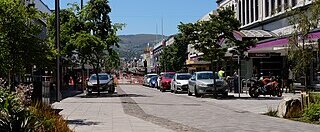-
Protecting Kāwhia HarbourKāwhia Harbour is a treasured natural environment that supports diverse marine life and provides important recreational opportunities for our community. Current vehicle access is causing ongoing damage to the harbour's ecosystem and poses serious safety risks to harbour users. Vehicle traffic in sensitive areas is resulting in: - Damage to shellfish beds and marine habitats and disruption to our endangered wildlife including tuturiwhatu/ NZ dotterel - Erosion of harbour margins - Safety concerns for families and children using the beach - Disruption to natural coastal processes The proposed Ocean Beach access way would provide a sustainable alternative that balances community access needs with environmental protection. By signing this petition, you support the Kāwhia community's vision for a protected and sustainably managed Kāwhia Harbour for future generations. Endorsed by: Te Taiao o Kāwhia Moana & Onepū Charitable Trust694 of 800 SignaturesCreated by Te Taiao o Kawhia Moana Incorporated Society
-
Stop the proposed public transport fare hikes***NOTE: This petition was delivered in April 2025. If you sign after that date, we will keep you updated about the campaign, but we won't deliver your name to Parliament. You can also follow us on Facebook or Instagram. Together, let's work for affordable public transport!*** We believe Aotearoa New Zealand should be a place where everyone can afford public transport. We are concerned that the Government is trying to increase the ‘private share funding targets’ for public transport which will require public transport authorities to significantly increase fares - often against their wishes - to meet those targets. This could add pressure for people, especially those most affected by transport poverty. In Wellington the private share targets could lead to fare increases of over 70%[1]. Other councils have warned of similar and worse fare hikes, such as fares going from $2 to $8 in Christchurch[2]. We believe the Government should instead increase funding for public transport to reduce emissions and improve equity. We have a vision of free public transport for those who need it most. This would reduce emissions from a major sector (transport), reduce one aspect of the cost of living for those who spend the largest percentages of their weekly income on transport, and improve social connection in our communities. Central government funding for public transport ensures these free fares can be provided across the motu. It supports local authorities to provide public transport for their communities. Increased public transport fares have already greatly impacted low-income families, and cost of living is already increasing for the most vulnerable people, and further price increases would put even more pressure on them. This petition has been organised by the Aotearoa Collective for Public Transport Equtiy: Free Fares NZ. Free Fares is a coalition of more than 100 organisations, including local councils, LGNZ, anti-poverty groups, student unions, and many churches, unions and other community organisations. They call for central government funding to ensure free fares for students, under 25s, Community Service Card holders and Total Mobility Card holders and their support people. The coalition has so far been successful in securing permanent half-price fares for Community Service Card holders. CLOSES 31 March 2025 Further reading The Fairer Future Coalition with support from the Disabled Persons Assembly. A Thousand Cuts: An Assessment of the Cumulative Impact of Recent Government Decisions on Disabled People and Other Communities. May, 2024. https://www.scribd.com/document/736889393/A-Thousand-Cuts Relevant documents New Zealand Government, Government Policy Statement on Land Transport 2023-2024,June 2024, https://www.transport.govt.nz/assets/Uploads/Government-Policy-Statement-on-land-transport-2024-FINAL.pdf NZTA, Increasing the private share of public transport operating expenditure Discussion document, 18 November 2024, https://www.nzta.govt.nz/assets/Walking-Cycling-and-Public-Transport/docs/Increasing-the-private-share-of-public-transport-operating-expenditure-pta-discussion-document-november-2024.pdf [1] Bus and train fares may surge by up to 70% to meet NZTA targets | RNZ News [2] Bus fares could rise to $8 in Canterbury | Star News6,260 of 7,000 SignaturesCreated by Free Fares Campaign

-
Concerned Communities of Bream Bay against Marine Sand MiningWhy sign this petition? This petition gives our local elected members and councils the mandate to ensure the health and wellbeing of Bream Bay and local communities are protected into the future by submitting strong opposition on our behalf. Why is this important? We don’t need to destroy our seabed to build our future. New Zealand companies are producing engineered sand from recycled materials – a cleaner, smarter and more sustainable alternative. With growing investment in engineered sand technologies across NZ, marine mining is no longer necessary. Bream Bay is a thriving ecosystem. It’s home to protected marine species, vital fisheries and beloved beaches. Its health is essential to our environment, economy and the community’s wellbeing. This proposed large scale operation would: • Destroy seabed habitats and vital marine ecosystems. • Disrupt sediment flows that protect our beaches, increasing erosion and coastal instability. • Create sediment plumes that smother marine life, and degrade water quality far beyond the mining zone. Together, we can protect Bream Bay’s unique marine environment, preserve its cultural and recreational value, and secure a sustainable future for our communities. Bream Bay is not a quarry. This is our coast. Let’s keep it safe for generations to come. For more information https://savebreambaysand.org/ References Sand and Sustainability: 10 Strategic Recommendations to Avert a Crisis | UNEP - UN Environment Programme Kayasand - Sand Manufacturing & Fine Aggregate Separation Products & Services UNEP Marine Sand Watch reveals massive extraction in the world’s oceans ‘Alarming’ scale of marine sand dredging laid bare by new data platform3,201 of 4,000 SignaturesCreated by Bream Bay Guardian Society

-
Concerned Communities of Taranaki and Manawatu Against Seabed MiningThe South Taranaki Bight is home to a rich and diverse marine ecosystem supporting a wide range of species and habitats, including dolphins, penguins, and whales. The area is also a popular spot for fishing, with abundant and diverse fish species. The area’s underwater ecosystems include important feeding and breeding grounds for marine life, such as fish, seabirds, and marine mammals. It is vital that the health of this abundant ecosystem is protected to ensure the long term health of these habitats and the wellbeing of our communities. This is our coast. Trans-Tasman Resources Ltd (TTRL) is seeking to fast-track a proposal to mine iron sands from the seabed within the South Taranaki Bight. This proposal poses a direct threat to the marine life and habitats that depend on this delicate ecosystem. Seabed mining, which involves extracting minerals from the ocean floor, is an experimental and largely untested process. It presents significant risks to the seabed and surrounding environment, potentially causing far-reaching and irreversible damage to not only the project area, but extending many kilometres along the coast due to the spread of sediment plumes that could smother these ecosystems. TTRL wants to mine offshore in depths of up to 20-42 m deep. They plan to dig up 50 million tonnes or more of the seabed every year for 35 years, dumping 45 million tonnes back onto the ocean floor [1]. The dumping back of the waste is what differentiates seabed mining from sand mining, and it has a much bigger impact on the benthic and marine environment. This type of seabed mining has not been carried out anywhere else in the world. This isn’t TTRL's first attempt to get consent for seabed mining in the area. Over the past decade TTRL has had several unsuccessful attempts, spending millions of dollars on the hearing processes and using up an extraordinary amount of time and hundreds of thousands of dollars from the New Zealand public and existing industries, particularly fisheries, opposing their plans. So far their attempts to gain consent have been unsuccessful for risks to the ecosystems and inadequate information in their applications [2]. Now TTRL is making another attempt to secure consent for seabed mining off the Taranaki Coast through the new Fast Track process. The application area in 2024 is 66km2, but the company has permits for over ten times this area, for which a fast track consent could create a precedent. By applying to the Fast Track process TTRL are trying to side step the ongoing opposition to their plans. The Fast Track Bill proposes no feedback and submission process from the community, and only allows submissions from invited “relevant” local authorities. The local community has rallied against this proposal for years, dedicating significant time and resources to protect this precious environment. Local Iwi, along with residents, environmental organisations, boaties, fishers, surfers, and dairy farmers have been continually fighting to oppose this operation [3]. Offshore wind energy development is also threatened by seabed mining, and one developer has already pulled plans for this renewable energy source, due to TTR’s mining bid [4]. Wind farm developers are adamant the 2 projects are not compatible. The full economic and environmental impacts of this proposal have not been adequately assessed or presented. To fully understand the potential consequences of seabed mining, an independent regional cost-benefit analysis is needed. This analysis would provide a comprehensive evaluation of both the short-term and long-term effects on the local economy, environment, and community well-being. Because local councils are potentially the only bodies invited to provide feedback to the Fast Track expert panel or the Environmental Protection Authority (EPA), it is crucial that we, as residents directly impacted by this proposal, come together in opposition. By uniting our collective voice, we can give our local councils the mandate to ensure the health and wellbeing of our unique coast and communities are protected into the future by submitting strong opposition on our behalf. For more information on the social and environmental effects and the known economic costs and benefits please check out our website at: https://www.concernedcommunities.co.nz/ Bfm radio interview here: https://95bfm.com/bcast/get-action-concerned-communites-of-taranaki-and-manawatu-against-seabed-mining-w-whanganui-district References: 1. https://www.forestandbird.org.nz/campaigns/seabed-mining 2. https://www.courtsofnz.govt.nz/assets/cases/2021/2021-NZSC-127.pdf 3. https://www.theguardian.com/world/article/2024/aug/19/deep-sea-mining-new-zealand-south-taranaki-bight-ocean-seabed-patea-beach-ntwnfb 4. https://newsroom.co.nz/2024/10/24/offshore-wind-developer-pulls-out-of-nz-amid-seabed-mining-concerns/3,452 of 4,000 SignaturesCreated by Charlotte Melser
-
GWRC: Save the Tawa On Demand bus service!The Tawa On Demand bus service provides vital access to local services for those living up on our steep hills, and enables a car-free commute for those working in town. It supports families and people with limited mobility, reduces traffic and emissions, and improves social cohesion. The service has exceeded expectations, with consistent usage and 96% customer satisfaction. Without continued support from GWRC, the service will have to stop at the end of this year. We’re asking GWRC to commit to funding sustainable public transport within Tawa - whether that’s the existing Tawa On Demand service, a scheduled service, or a mixture of the two, and to asking the Government to help out.1,331 of 2,000 SignaturesCreated by Jackson Lacy
-
Don’t cast us adrift! Ensure Cook Strait ferries can carry trains.The ageing Interislander ferries must be replaced. We believe it’s crucial that new ferries are rail-enabled and publicly owned, letting rail freight and equipment move easily between the North and South Islands. Without rail-enabled ferries, the two islands’ rail networks will be disconnected, restricting the movement of goods and putting the South Island’s whole rail network at risk. Current and future passenger rail services also rely on a viable national rail network. The government said in its transport policy statement that it would prioritise making the best use of existing transport infrastructure. The only decision consistent with this policy is to ensure future ferries are rail-enabled and remain in public ownership.8,894 of 9,000 SignaturesCreated by Patrick Rooney

-
Rise Above The Cloud: Change Vape Packaging to Display Health WarningsVaping is an issue in New Zealand that affects many people’s health habits and can be easily picked up at a young age. There is a particular concern around vaping and the ways it impacts youth. Vaping in schools is a concerning issue in New Zealand, with school kids obtaining vapes and vaping during school hours. Our petition aims to reduce the amount of vape sales as well as make it common knowledge that vaping is bad for your health. By changing the packaging to be the same as cigarette packaging, we are hoping that this will help hinder the promotion of vapes and inform consumers about the serious health risks they are taking when they are using one. We hope that the impact of our petition helps to inform people that vapes are dangerous to health. We think that vaping is an issue among a large amount of the NZ population and one that impacts us both socially and in a health context. Australia has made significant, admirable crack-downs when it comes to vaping. For packaging, they require that it remains “plain”. By this, they mean “be packaged in a certain colour, display brand names in certain ways, display the required text and graphic health warnings, not display logos, brand images or promotional text.” (3) By doing this they have minimised the appeal of purchasing the products. Corporate interests will undoubtedly affect our ability to change vape packaging, as vape companies prioritise profitability and marketability over public health concerns. Improved packaging will not be seen as an improvement to vape companies as health warnings, no logos, and no bright colours will impact their sales and make them take a turn for the worse, which ultimately means less profit for them. They want their packaging to be attractive in order to keep addicts buying their products. Vapes and vape packaging are brightly or pastel coloured, often with cartoon characters or images displayed. This packaging is part of the reason that makes vaping so attractive and popular among youth. Marketing strategies implemented by vape companies include the packaging targeting youth. According to News Medical, “Packaging holds a significant position in promoting vaping products, including devices, pods, and e-liquids. Candy- or fruit-flavoured vaping products sold in colourful packaging are known to attract the youth attention more than adult smokers. Moreover, packaging of such products is often designed to resemble food or drink products that are mostly marketed to the youth” (4). References: 1. https://www.health.govt.nz/publications 2. https://nap.nationalacademies.org/resource/24952/012318ecigaretteConclusionsbyEvidence.pdf 3. https://www.health.gov.au/topics/smoking-vaping-and-tobacco/tobacco-control/plain-packaging 4. https://www.news-medical.net/health/Colorful-Packaging-Hidden-Dangers-The-Push-to-Regulate-Vape-Aesthetics.aspx160 of 200 SignaturesCreated by Bindi Rolton

-
Ban Misleading Labelling for Vegetarian and Vegan ProductsWith the increase in the use of buzzwords on packaging, it is becoming unclear what is in our food unless you read through the entire list of ingredients. We want clear labelling and a ban on using vague and misleading terms. Consumers need to know what they are buying without reading everything on the packet, and this is particularly important for those with allergies. The current Food Standards Code provides a foundation for food labelling requirements, but it lacks specific provisions for vegan and vegetarian labelling, leading to ambiguity and confusion for consumers[1]. Introducing new provisions that standardise and clarify these terms would address these shortcomings, aligning with the Code's objectives of consumer protection and fair-trade practices. We envision a future where consumers can make informed, ethical, and confident choices about the products they purchase. By advocating for clear, standardised, and enforceable labelling regulations, we aim to eliminate ambiguity and ensure transparency in the labelling of vegetarian, and vegan products. [1]The current Food Standards Code Legislation ANZ can be viewed here: https://www.foodstandards.gov.au/food-standards-code/legislation Further reading: • https://www.foodstandards.govt.nz/consumer/labelling/Labelling-consumervalueissues • There are a number of products currently on the NZ market that have misleading labels, the most recent of which was reported by The SpinOff here: https://thespinoff.co.nz/kai/22-03-2024/vegan-advocates-claim-dessert-branding-misleading-mpi-says-otherwise • Animal genes are now being edited into soy beans. You can read more about that here: https://vegansociety.org.nz/animal-genes-in-soy-is-unacceptable/ • And also here: https://www.feedandgrain.com/grain-handling-processing/biotech-crops/news/15669206/moolec-science-receives-usda-approval-for-pig-protein-soybean1,422 of 2,000 Signatures
-
Fund public transport in Greater ChristchurchWell-funded public transport systems create healthy, connected cities which are better for the public and for the climate. Improving the frequency, reach and quality of public transport services in Greater Christchurch will ultimately benefit the whole community. Greater Christchurch is growing rapidly - a 10% population growth from 2018 to 2023, far higher than the national average of 6%, and much of that growth located in the Selwyn (29% increase) and Waimakariri (11% increase) regions [2]. More planning is required to ensure that Greater Christchurch remains a liveable, accessible city. A city of Christchurch’s size requires a good public transport system, one that gives residents an alternative to car dependency. Car usage is becoming increasingly expensive, especially as Greater Christchurch continues to sprawl, locking in longer journeys. Public transport usage in Christchurch is increasing, with almost one-third of Christchurch residents having used it at least once in 2023, and 14.3 million trips a year [3], but requires investment to become accessible for all residents. Christchurch residents have made this clear in their submissions on ECan’s Long-Term Plan - 64% of submitters want improved public transport. We envision a city where residents can access safe and sheltered bus stops close to their homes, and be able to get where they want to go with convenience. A city where our streets and roads are not congested with traffic, and safe and enjoyable places to get around, whether on foot, cycling, in a car, or by bus. As transport makes up over 50% of Christchurch’s greenhouse gas emissions [4], and contributes to our air pollution problem, which kills 800 people a year in Christchurch alone [5], moving more people onto public and active transport is good for our health and good for the planet. As outlined above, there is a plan, which has already been agreed to by the various councils and NZTA - the PT Futures plan. However, to implement the plan, Central Government funding is required [6]. The Government have pulled back on an earlier commitment of 78 million in funding towards the project. Despite $2.7 billion in funding for transport announced in the budget in May, there were no funds earmarked for public transport in Christchurch [7]. Given the importance of investment in public transport in Greater Christchurch, there is still time for additional funds to be found. Unlike the proposed rural highway projects, funding public transport will dramatically speed up getting to places within the city. Public transport in Christchurch has long been neglected. Oliver Lewis of BusinessDesk wrote a great article titled “Christchurch misses out in transport funding lottery” [8], which highlights the disparity of funding for transport that Christchurch receives compared to Auckland and Wellington, and is worthwhile reading. We ask Simeon Brown to invest in Greater Christchurch and support the PT Futures plan, which will turbo-charge public transport in Ōtautahi. References: [1] https://www.ecan.govt.nz/your-region/living-here/transport/public-transport-services/transforming-public-transport [2] https://www.thepress.co.nz/nz-news/350294139/christchurch-getting-older-more-diverse-and-much-much-bigger [3] https://ccc.govt.nz/the-council/how-the-council-works/reporting-and-monitoring/life-in-christchurch/transport [4] https://newsline.ccc.govt.nz/news/story/latest-greenhouse-gas-emissions-report-released-for-christchurch [5] https://www.rnz.co.nz/news/national/470488/air-pollution-invercargill-revealed-as-deadliest-centre-study [6] https://businessdesk.co.nz/article/infrastructure/short-sighted-christchurch-bus-funding-doesnt-exist-council-says [7] https://budget.govt.nz/budget/pdfs/releases/l12a-factsheet-transport.pdf [8] https://businessdesk.co.nz/article/transport/christchurch-misses-out-in-transport-funding-lottery607 of 800 SignaturesCreated by Greater Ōtautahi

-
Join the movement for economic justiceThousands of job losses. Rolling attacks on Te Tiriti o Waitangi. No-cause evictions and selling off public housing. Cuts to our public transport, health and education. It is clear - this government has waged economic war on everyday people in Aotearoa. Their approach isn’t new. Taking from our collective pool to line the pockets of private interests is a tried and true method of moving resources away from our communities and forcing more and more of the basics of life into businesses to be profited from. It puts profits over people, and our living world. For what? We can shift the dial. Through a vision for an Aotearoa that is fair and flourishing, where Te Tiriti o Waitangi is honoured properly, and for an economic system therefore that puts the wellbeing of people and our planet above corporate profit- we can unify, act, and build toward real change. Now is the time to act together. Sign up to the campaign now to find out how to get involved. Mauri ora!535 of 600 SignaturesCreated by Team ActionStation

-
Stand Up For the Conservation Lands in Your CareWhether these lands are called stewardship lands or Schedule 4 lands they are all part of the DOC estate and many areas contain rare species or act as buffers for their habitats. We urge you to protect the waterways above and below ground and prevent the creation of thousands of tonnes of toxics waste containing heavy metals. Climate change is already affecting the natural world and creating serious environmental stress. To sacrifice species such as the 200 million old Archeys frog species so that overseas corporations can make large profits, is bad for the economy and our reputation. You will recall that in 2010 40,000 people marched down Queen St in Tamaki to protest the proposed mining of conservation lands and National Parks. There is no mandate for the destruction Shane Jones is determined to impose, in fact there is huge public support for protecting the natural world. These places are too precious mine and we need leaders in Cabinet to actively protect them.3,386 of 4,000 SignaturesCreated by Coromandel Watchdog
-
The Right to WalkDunedin city centre should prioritise walking as a carefree right and allow retailers to thrive off a steady flow of safe, comfortable, and eager customers. The current renovations on George Street have made progress towards this ideal, but they have been undermined by the decision to permit car travel between the pedestrian zones. Cars will only cause congestion and damage to the tiled road surface, resulting in great harm both for retailers, who have endured a pandemic on top of everything else, and pedestrians. Given that the city has survived without direct vehicle transit through George Street for many months now, it is self evident that cars are not needed within the city centre. We call on the Dunedin City Council to change its approach and fully pedestrianise the renovated George Street once it is reopened. In doing so, pedestrians can safely enjoy their town and retailers may enjoy a steady flow of foot traffic to support their small businesses. Let’s keep the charm of our inner city by making it car free, sign the petition if you agree!50 of 100 SignaturesCreated by Luke Mitchell

.png)
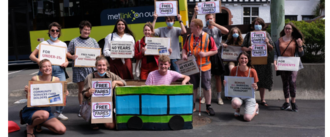
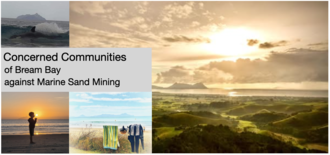

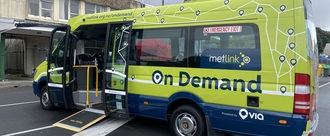
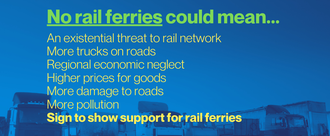.png)



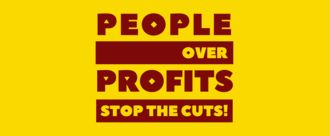.png)

